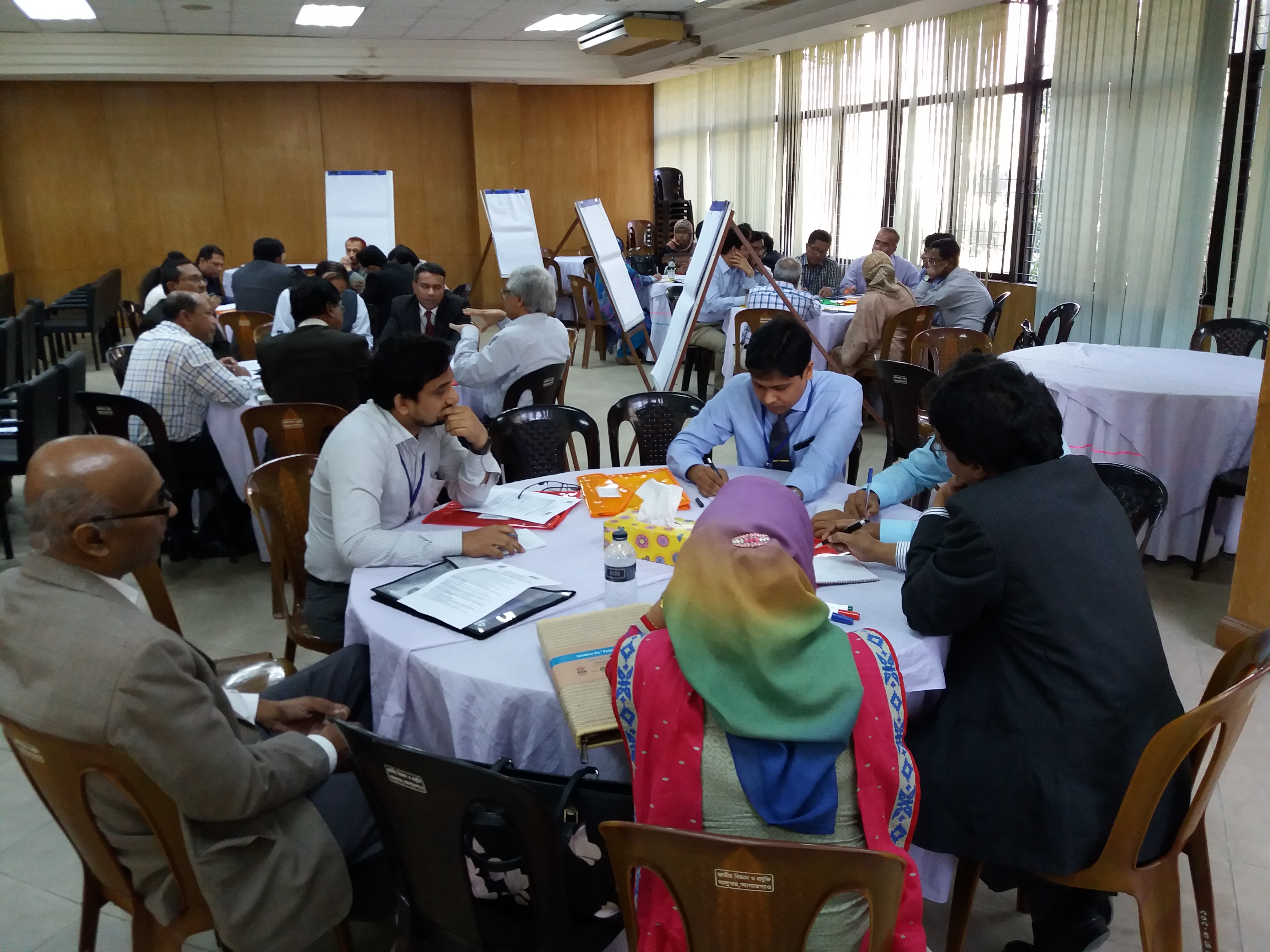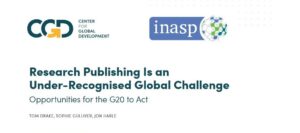
Improving the journal publishing environment of Bangladesh – Part 1: the dialogue
In the first of a two-part blog series, Haseeb Md Irfanullah talks about how organizations from the North and the South can bring together Bangladeshi journals to change the face of academic publishing in Bangladesh through inclusive, long-term planning. He also talks about how this will help Bangladeshi journals meet the new Journal Publishing Practices and Standards (JPPS) levels that are being developed by INASP and African Journals Online.
Over the past decade, the BanglaJOL platform has made a commendable contribution to scientific communication in Bangladesh. It is a part of a larger Journals Online project of the Oxford-based NGO INASP aiming at promoting the visibility, quality and reputation of journals in developing countries. The Bangladesh Academy of Sciences has been with the BanglaJOL since its start. In recent years, the Academy has been leading the promotion and management of the BanglaJOL, currently housing 140 Bangladeshi journals, with technical backstopping from INASP.
Being a leading scientific think-tank of the country, the Academy has also been building the capacity of Bangladeshi researchers and editors on research communication and journal publishing by regularly organizing training sessions, workshops, and discussions. In October 2015, the Academy and the INASP organized a training workshop for BanglaJOL’s journal editors on ‘International Publishing Standards’. In an article on my experience as the designer and facilitator of this workshop, I emphasized the need for regularly bringing science editors of developing countries together to discuss some basic questions − why we publish our journals and if our journals maintain internationally acceptable standards.
In a follow-up piece, I further proposed that a dialogue should be organized among Bangladeshi editors and researchers to discuss the prevailing publishing environment, challenges and opportunities, and current standards of Bangladesh’s journals. That first ever dialogue would end with a ‘Roadmap’, which will essentially outline how Bangladesh’s journals could collectively work together, and make affordable positive changes to improve journal publishing standards.
My proposition was for the Bangladesh Academy of Sciences and INASP to organize a dialogue coincidently matched with an on-going discussion between them on making the BanglaJOL more useful, effective, and self-sustaining. We all came together and held the first ‘BanglaJOL Dialogue’ on 8 December 2016. This Dialogue with more than 40 BanglaJOL editors was designed and facilitated by me. It had three main discussion points: i) Defining international journal publishing standards; ii) Major challenges in attaining those standards and ways to overcoming them; and iii) Developing a ‘Roadmap’ towards improving Bangladesh journals’ standards.
Publishing standards
To develop a list of internationally recognized journal publishing standards, the editors took part in rigorous discussions and debates. They also matched their draft lists of standards with those considered by, for example, Clarivate Analytics (formerly part of Thomson Reuters) while selecting a journal for indexing on the Web of Science. At the end, the whole group came up with eight publishing standards: i) Publishing journal regularly; ii) Considering ethical aspects – conflict of interest, author’s declaration, copyright permission, plagiarism; iii) Ensuring peer review process; iv) Having an effective editorial board; v) Indexing the journal; vi) Novelty of the work – taking the concerned discipline forward; vii) Following standard journal format – authors’ guidelines, publishing in html/pdf versions; and viii) Having international perspectives in published papers.
These eight publishing standards are also closely aligned with the Journal Publishing Practices and Standards (JPPS), which INASP has been developing with African Journals Online (AJOL). Focused initially on the JOL journals, the JPPS is a detailed framework and set of levels that will give readers and authors assurances about the quality of journal processes, while at the same time guiding journals about how they can improve their processes.
Identifying the challenges
At the December meeting in Bangladesh, participants identified major challenges against the standards discussed. Several standards had some common challenges, while failure in attaining one standard in turn affected others. For example, the major challenges for maintaining regularity in publishing a journal included lack of commitment from and quality of Editorial Board members and reviewers, inadequate supply of quality papers, funding constraints, lack of supporting staff, and time constraints of editorial staff and reviewers. Some of these issues also directly affected the peer-review process and editorial board’s effectiveness. And all, in turn, affected indexing of a journal by reputed agencies.
These discussions matched with the current overall state of the 30 BanglaJOL journals that participated in a survey I conducted just a week before this Dialogue. Publishing journal issues regularly was a major challenge faced by these journals. Twelve journals admitted a delay in publishing the latest issue by one to six months compared with the expected date. Although the peer-review process is a crucial element of journal publishing standards, eight journals were yet to follow peer review strictly. A total of 17 journals were indexed by at least one agency. Although eight journals claimed to have some kind of Impact Factor, only two had a Journal Citation Reports (JCR) Impact Factor.
It was, however, encouraging to see that 25 out of the 30 journals were published both in print and electronic forms (and one is published online-only), and almost all were receiving manuscripts via emails or online submission systems. A total of 13 journals said that, on average, they took three to five months to process a manuscript − from submission to acceptance/rejection, while another 10 journals said they needed one to two months. ‘Instructions to the Authors’ is an essential tool to connect a journal with its potential authors. So it was promising to note that 21 journals had updated their instructions within the past two years. It was also great to find that 25 journals had international authorship, 16 received services from foreign reviewers, while seven mentioned having foreign editors and/or advisory board members, highlighting international linkages of these BanglaJOL journals.
The above discussions and understanding subsequently assisted the BanglaJOL editors to draft a ‘Roadmap’, which will be discussed in the second part of this article. The Roadmap is aimed towards collectively improving the standards of Bangladeshi journals and meeting the soon-to-be-launched AJOL/INASP JPPS levels.
Haseeb works for IUCN in Bangladesh and has keen interest in research communication. He tweets as @hmirfanullah and is available at hmirfanullah@yahoo.co.uk.

 Previous Post
Previous Post Next Post
Next Post



It was a great privilege for me to attend on that dialogue. And we are very much grateful to BAS (Bangladesh Academy of Science) and BanglaJOL.
Especially Mr. Haseeb Md Irfanullah has excellent potentiality to conduct that Dialogue. His way of Speaking, leading & Guidance, Directions everything accomplished us.
That dialogue make us enthusiastic to solve the challenges that we have been faced regularly and we the young budding individual try our best to do the better for our country.
It will be influential to arrange a follow-up dialogue after certain time regularly. Thanks INASP to support and Guide us and published this issue in your webpage.
Thank you Dr. Iqbal, for your kind words, thoughts and expectations. I very much appreciate that.